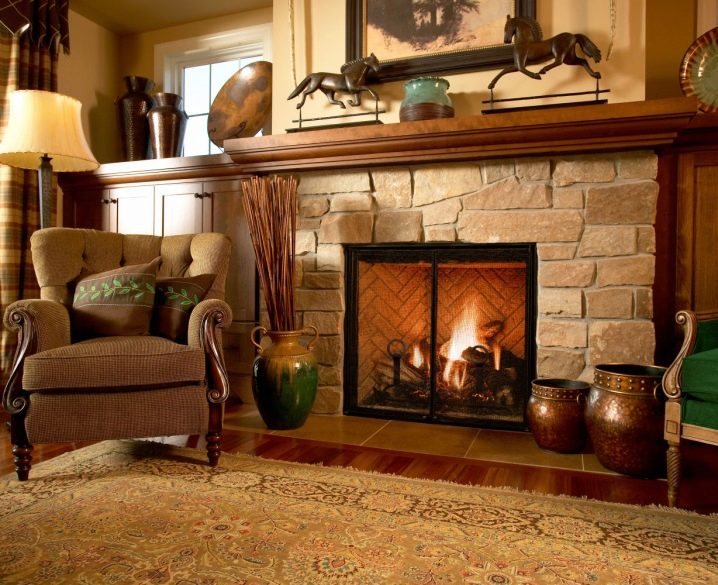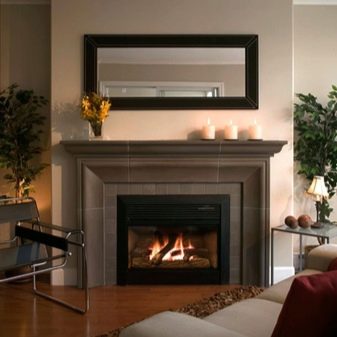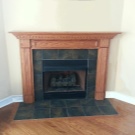Heat-resistant glue for stoves and fireplaces
Returning home after a hard day’s work everyone dreams of a warm dinner, hot tea and a cozy atmosphere. This is especially desirable at the time of the long cold winter - as never before it is pleasant to sit by the warm fireplace and look at burning flames and mischievous sparkles from the logs for a long time. Their dance fascinates, brings in a bit of a fairy tale in everyday life and takes it to the world of dreams, away from the impermanence of life.
An important part of the fireplace, designed to relax, is its finish. For it to be beautiful and to please the eye for many, many years, you need to choose high-quality glue for its laying.
Criterias of choice
Choosing glue for decorating fireplaces and stoves, be sure to pay attention to the following indicators:
- Fire in the house - it is always a fire hazard! That is why you should choose only fire-resistant materials for laying fireplaces.
- High-quality glue must be resistant to sudden temperature changes. When heated, almost any substance in nature expands.This process can be destructive for decoration.
- Due to temperature fluctuations and frequent processes of plaster structure expansion, the adhesive must be elastic. Such glue will protect the wall from falling out of its elements.
- It is very important that the composition of the adhesive contained fibrous substances. They create additional connections between the base and the decor.
All these requirements are perfectly matched by heat-resistant glue for stoves and fireplaces Hercules, but on the shelves you can pick up its cheaper counterparts or more expensive ones with additional features.
Quality requirements
There are two types of mixtures for facing the fireplace: natural and synthetic. Natural mixtures contain cement, sand and chamotte clay. In synthetic components, additional substances are added to the above components to increase strength.
The first thing you need to pay attention to is packaging. It should be whole and dry, there should be no water stains. On the packaging should be indicated expiration date, as well as the date of production and contact the manufacturer.
The mixture should be homogeneous and crumbly, without lumps or stones.Good mixes are popular with experienced stove-makers, so it would be useful to know their reviews about selected blends before purchasing them.
Types of materials
Glue
Heat-resistant glue for stoves and fireplaces is sold as a dry mix and as a ready-made paste. Experienced stove-workers prefer to use ready-made glue, however, it is better for a beginner to opt for a dry mixture, since the ready-made solution dries quickly and becomes unusable. A newcomer who is just getting acquainted with the technique of masonry decor may not have time to use the entire finished mixture, and the dry solution can be diluted in small portions. The cost of dry - much lower than the finished.
Glue for finishing fireplaces is of three types:
- Glue for finishing the portal. This glue is more heat resistant, but slightly less elastic.
- Glue for basic masonry. It has increased elasticity - it will keep the finish in immaculate condition for many years.
- Tile glue is useful in the case when a fireplace or a pipe will be lined with ceramic tiles.
Paint
The usual enamel is perfect for coloring metal parts. However, enamel for fireplaces is somewhat different in its composition,therefore, the banks must necessarily indicate that it is a paint for the decoration of fireplaces and stoves. There is also paint in cans. It more evenly rests on the surface, so its use is much easier than the use of enamel. However, the paint consumption in cans is much higher, so for painting large surfaces it is still preferable to prefer enamels.
Panels
Panels and stoves for the fireplace - this is the simplest version of the decor. Such panels are made from heat-resistant polyurethane. Included with each panel are special mounts, which should be attached with a screw to the fireplace, then the panel itself is put on these mounts. These panels have very diverse forms: from simple, smooth portals, to portals with intricate, elegant stucco molding. This finish is resistant to a significant increase in temperature, but open fire can cause significant harm, so you should avoid contact with fire. For creation of additional heat insulation, when using this option of a decor the heat-resistant sealing cord will be ideally suited.
Mastic
Mastic is mainly used for minor repairs. Heat-resistant mastic can withstand a temperature rise of up to 1100 degrees and a drop to -50. Good mastic has bactericidal properties and moisture resistance. Such mastic can be used in rooms with high humidity. Modern mastics also have adhesive properties, so it can be a temporary replacement for glue in case of damage to decorative elements.
Plaster
Plaster or plaster is not just a decorative element, sometimes it is a very important component of a stove or fireplace. It creates an additional layer, which serves as an obstacle to carbon monoxide gas in the event of cracks in the masonry. With a long simple fireplace, in the joints of the masonry (especially when using natural mixtures), mold, fungi and many harmful microorganisms that do not survive in the plaster appear. To finish the fireplace you need to select special mixtures. They must have high adhesion (penetrate deep into the base), high elasticity, as well as be heat-resistant and fire-resistant.
Varnish
Varnish for fireplaces is needed if the decor is made of stone or brick.Porous is quickly clogged with dust and soot, so the raw surface of the fireplace quickly becomes unattractive. Varnish will make the surface of the decor smooth. Varnish for fireplaces must have the following characteristics:
- It must withstand temperatures up to 200 - 250 degrees;
- It must be moisture resistant to prevent mold or mildew;
- In its composition must be acrylic, for quick drying;
- It must have a high degree of adhesion, that is, penetrate deep into the material;
- It should be transparent.
Thanks to the quality varnish, the decor shades will get a pleasant shine, they will become more saturated and pleasant.
Sealant
There are two types of sealants for finishing fireplaces and stoves: sealants for strengthening in especially hot places and sealants for working with decor. On packs of both types of sealants should be marked with a twinkle, which indicates that the sealant in this package is heat resistant.
Sealant for work in hot areas can withstand temperatures up to 1500 degrees. It is suitable for work in areas where it will be available to open fire. Such a sealant is suitable for fixing furnace casting to brickwork and sealing chimneys.High-quality heat-resistant sealant is able to significantly protect the house from fires.
Sealant for external work must withstand temperatures up to 200 degrees. Such a sealant can be moisture-resistant - it is possible to carry out wet cleaning of the fireplace surface without fear.

































































